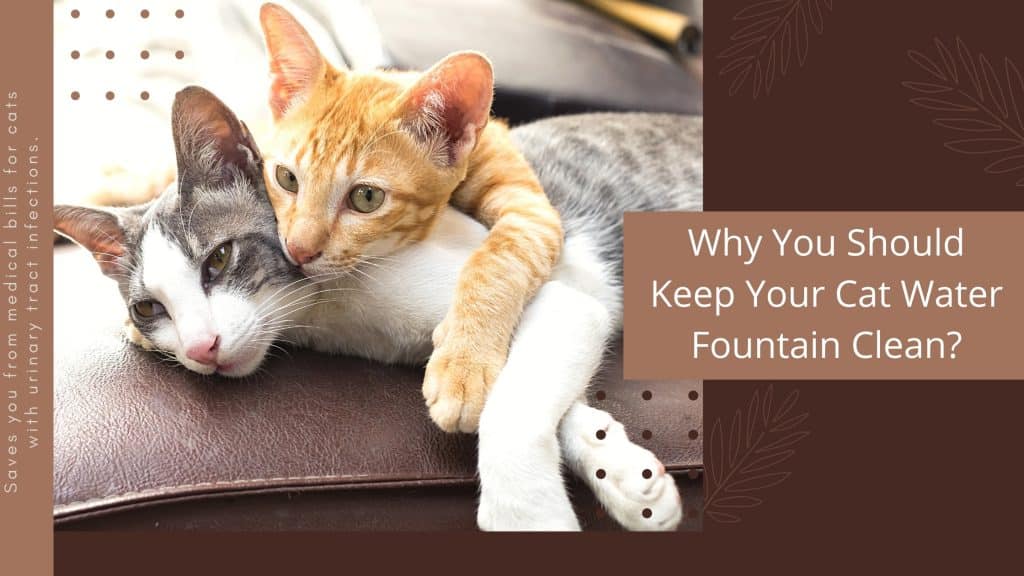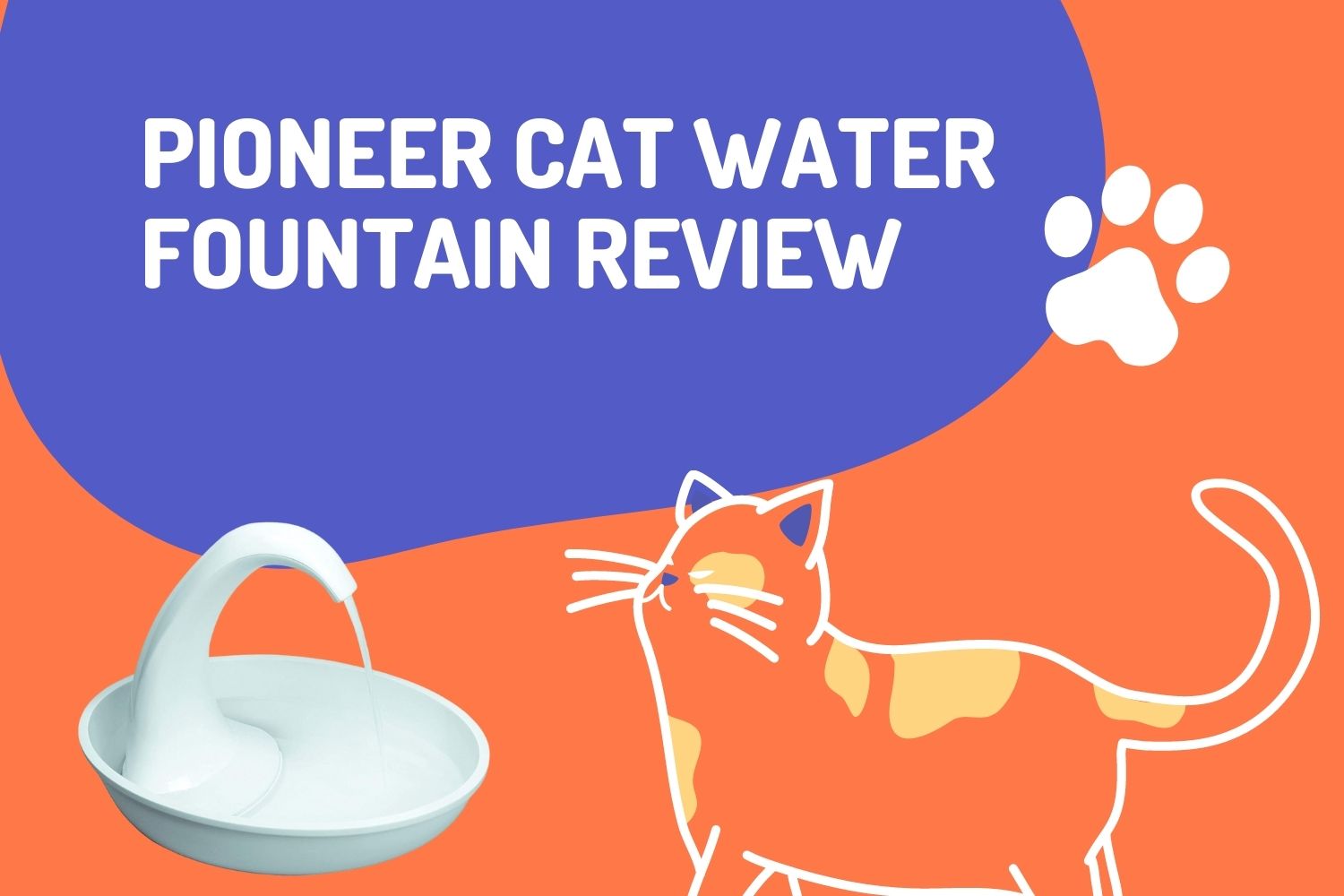
Your average cat water fountain might seem like it doesn’t need much cleaning, but don’t be fooled! and learn how to disinfect cat water fountain on your own.
Even if the water’s circulation keeps the water from getting stale, that circulation does nothing to keep the fountain itself clean. Over time, the accumulation of dust and even saliva from your cat’s mouth creates a slimy film within the fountain. As a result, the water starts tasting funky and begins to look dirty.
That spells disaster if your cat only drinks for their fountain. To make sure your cat’s hydration doesn’t suffer, here are three ways you can disinfect your cat’s water fountain, so it supplies clean and fresh water all the time.
A Note Before We Begin
Not everyone has the same model or type of water fountain, so whatever advice we give you may not work to the letter for your device. However, we’ve taken steps to ensure that all the information given below is generally helpful.
If your water fountain has complex mechanisms, you’ll find better information in your fountain’s user guide. If not, try the ways below anyway. You never know what might come in handy.
Note: A best cat water bowl fountain is a device that provides fresh, moving water for cats. A cat’s instinctual response to a running stream of water is to drink from it, and the sound of flowing water may entice your pet to use the fountain.
Benefits of Keeping Your Cat Fountain Clean
- It prepares your cat for the various possible water conditions.
- It eliminates bad tastes and smells that may have accumulated in the fountain.
- Cats become used to drinking from a clean, fresh-tasting water source.
- Cats are often more willing to drink from a clean water fountain.
- A clean water fountain assures you that your cat is drinking enough to stay hydrated, and isn’t trying to make its own freshwater supply from inside the bowl.
- Saves you from medical bills for cats with urinary tract infections.
- Lastly, your cat will get an uninterrupted supply of clean water.
Cleaning your cat’s water fountain is not as simple as just tossing it into the dishwasher. Follow these steps to make sure that you disinfect the fountain without ruining its working parts.
3 Ways to Disinfect Your Water Fountain
1. Give it a Deep Cleaning
Dusting the top and washing the machine with water will not work for long.
To ensure your fountain’s cleanliness, here are some helpful steps for you to follow:
Step 1
Disconnect the fountain from the power switch and begin to drain all the water from the fountain. You’ll want to remove all the water from the main tank, the canals, and more. This will prevent any flooding once you open your fountain.
Step 2
Start disassembling the fountain by taking the central tank unit out. You’ll need some essential tools for the disassembly. So, prepare before you begin working on the fountain.
Check it thoroughly for any screws and be thorough when taking out the different components and smaller bits if something goes amiss.
Disassembly is not as complicated, but staying organized will prevent any mistakes.
Step 3
Once you’ve taken out the main tank, remove the motor from within the machine. You may use your fingernails or a flathead screwdriver to take that component out.
This step requires some further disassembly, but it should be easy to remove.
Step 4
Once you’ve taken out the tank and the motor, use a soft head toothbrush and warm, sudsy water to clean away any slime you find. You will also need a microfiber cloth to wipe the pieces.
Also, clean all the other components that you removed from the fountain. For the actual machine, either wipe it down with a soft cloth or wash it with water. You’ll find further instructions for cleaning the cat water fountain within the user manual.
2. Clean the Outer Components
Let’s assume your cat’s water fountain isn’t as easy to take apart. What now?
With such water fountains, it helps to sanitize the water container (tank) if it’s located outside and the fountain’s base as thoroughly as you can. If possible, clean your cat’s water fountain in the dishwasher.
But, if there’s no way to fit your fountain in the dishwasher, or if you don’t have one, here are some steps for a disinfecting solution:
- Remove the plug from the fountain
- If possible, disassemble the electric component from the plastic unit and put the motor aside
- Make a mixture of ½ cup bleach in a gallon of water
- Soak the water fountain in the mixture for around 10 minutes
- Use a moist cloth to clean the fountain or rinse it thoroughly
- Air-dry it
While plastic water fountains are most common, many people use ceramic cat water fountains for cats that like to play around with their water.
Ceramic is a good option, but the material does not react well to scrubbers or cleaners. If you have a ceramic fountain, you’ll want to spray distilled white vinegar or any slime or marks you see.
Allow it to soak, then sprinkle some baking soda onto the area. Scrub using a soft pad, then rinse.
If you have a stainless steel water fountain, you can use your basic cleaner to disinfect the surface.
3. Use Various Brushes
If your water fountain has too many books and crannies, it won’t be easy to clean the biofilm thoroughly.
Disinfecting such a water fountain will require sponges, brushes, and a cleaning kit. Here are the steps you should follow:
Step 1
Unplug the fountain from the power switch and keep that wire component far from the fountain. Dump the water from the fountain and make sure it is clear.
Step 2
Disassemble the fountain and begin washing. You can wash the fountain in a dishwasher if the motor and cord can be removed. If not, you will need to hand wash.
Begin hand washing by using various brushes such as a bottle brush, aquarium brush, sponges, and a solution of lukewarm water and dish soap.
Use toothpicks and Q-tips to remove any slime or dirt from the fountain.
Step 3
Use a soft cloth or Q-tips for the motor to clean it, and remove any gunk you see. Pour water into the cavity and use a soft brush to clean out the motor cavity.
Be gentle when washing the motor.
Step 4
Rinse all the fountain parts well and let them all air dry in a cool, dry place. Once all parts are dry, wipe each with a microfiber cloth and begin reassembling.
Step 5
You’ll want to fill the fountain with water and test it before placing it in the necessary spot. Check the water quality to ensure no more gunk or slime in the water or pipes.
Once done, you can fill the water properly, place it where desired, and re-plug it.
Why You Should Keep Your Cat Water Fountain Clean

Some might wonder why keeping the water clean matters so much. Cats in the wild drink dirty water, so why clean a fountain?
In truth, your pet’s digestive system is simply more used to cleaner water. Not to mention that running water outdoors is often not as dirty as you think. Cats prefer running water because the motion naturally oxygenates the water and keeps it clean.
Keeping your water fountain clean keeps the water tasting fresh and delicious. Keep in mind, your fountain is always running, but it’s cycling the same water that often gets mixed with bacteria and germs from the atmosphere. Biofilm from your pet’s saliva also forms fountain slime that gets into the crevices of the fountain.
If you don’t clean your cat fountain every month, this increases the development of biofilm and the development of bacteria.
If your cat is susceptible to bacterial infections or is a senior cat, you’ll want to ensure that nothing taints their health that could have been easily prevented.
Which Type Disinfectant I Can Use to Clean Cat Water Fountain?
There are various types of disinfectants that can be effective for cleaning your cat water fountain. However, before you go out and buy any product, take some time to carefully read the label. Some may have chemicals in them that are harmful to animals.
To safely clean your cat water fountain, use one tablespoon of vinegar per liter of water to soak the parts and soak them for five minutes. Then rinse each piece thoroughly with fresh water before you let things dry completely and reassemble.
You may also get a cat-safe cleaner that is uniquely formulated to be safe around your pet without harming its mouth or throat. This allows it to kill germs while being gentle on your cat’s health and safety.
You, Will, need to disinfect less if you prevent algae in cat water fountain. While on the other side we encourage to use of homemade electrolytes for cats to prevent accidents that may happen due to cleanliness.
Conclusion on How to Disinfect Cat Water Fountain
Cleaning and disinfecting your cat’s fountain is not so difficult. Designate a day each month for fountain cleaning and spend a good twenty minutes making it better for your cat. Hydration is essential for all felines. We all know how difficult it can be to keep their water levels high.
Do your part in making sure your cat gets its share of good and clean water it needs.






